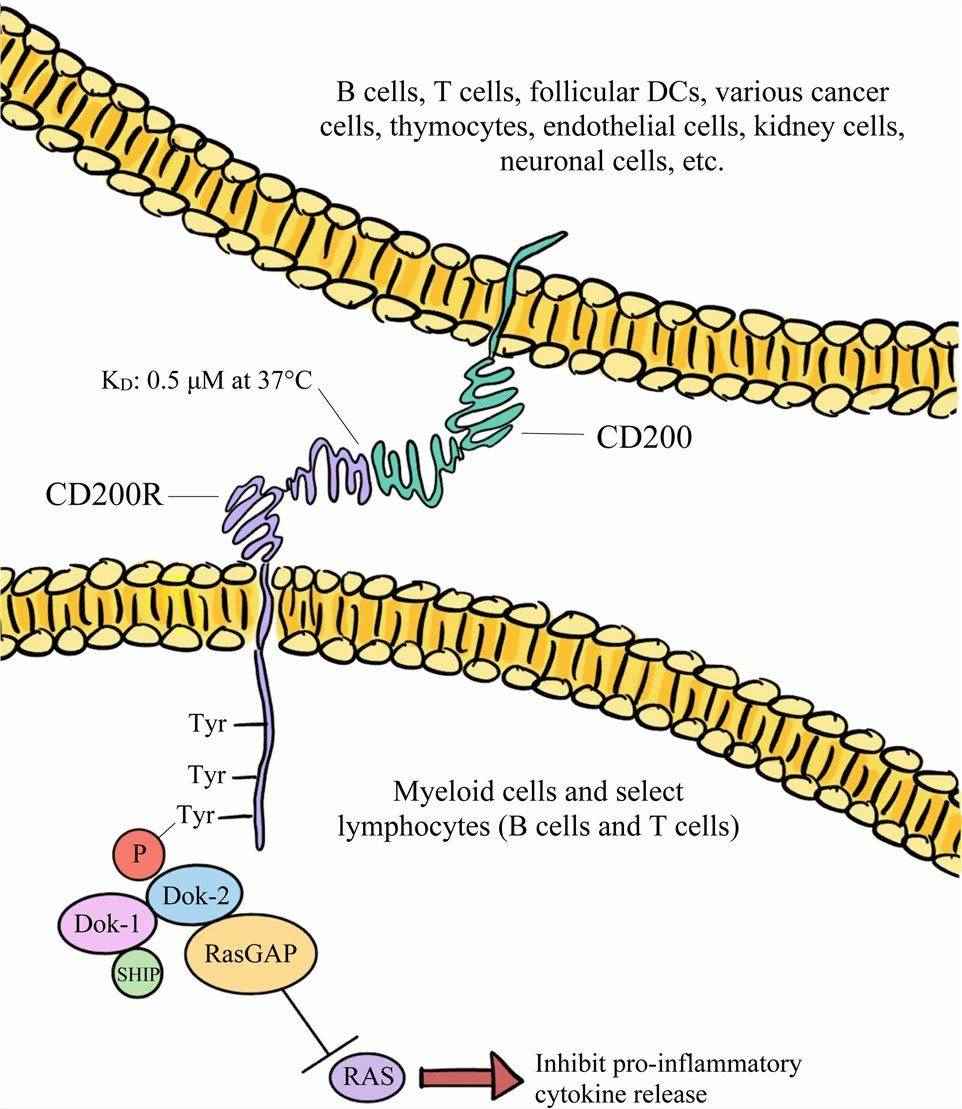What is CD200R1L Protein
What is CD200R1L Protein?
CD200R1L, or CD200 receptor 1-like, is a protein that plays a crucial role in immune regulation. It is a member of the immunoglobulin superfamily and is closely related to another protein known as CD200R1. While CD200R1 is well-studied, CD200R1L has emerged as a fascinating area of research due to its distinct characteristics and functions.
The Structure of CD200R1L Protein
Understanding the structure of CD200R1L is essential to decipher its functions and interactions within the cellular environment. CD200R1L is composed of extracellular, transmembrane, and intracellular domains. The extracellular domain contains immunoglobulin-like regions that are involved in recognizing and binding to ligands, while the transmembrane domain anchors the protein within the cell membrane. The intracellular domain is responsible for transmitting signals into the cell upon ligand binding.
The Function of CD200R1L Protein
The primary function of CD200R1L is to regulate immune responses. It achieves this by interacting with its ligands, such as CD200, which is expressed on the surface of various cell types, including neurons, endothelial cells, and immune cells. The binding of CD200R1L to CD200 results in the inhibition of immune cell activation.
CD200R1L is notably expressed in immune cells, including macrophages and dendritic cells. By modulating immune cell activation, CD200R1L helps maintain immune homeostasis and prevents excessive inflammation. This regulatory function is crucial for preventing autoimmune reactions where the immune system mistakenly attacks the body's own tissues.

Figure 1. The broadly expressed CD200 glycoprotein predominantly interacts with its CD200R receptor and downregulates both the function and activation of immune cells via the inhibition of RAS signaling. (Choe, D., et al. 2023)
CD200R1L-Related Diseases
Dysregulation of CD200R1L emerges as a pivotal player in the narrative of various diseases. In autoimmune disorders, a poignant decrease in CD200R1L expression sets the stage for unbridled immune activation against self-tissues. Conversely, the stage is reset in certain cancers, where elevated CD200R1L expression fosters an immunosuppressive microenvironment, permitting tumor cells to evade immune scrutiny.
The nuanced interplay of CD200R1L in diseases underscores its dual role as a potential therapeutic target. Deciphering the molecular nuances of CD200R1L dysregulation opens avenues for precision medicine, steering therapeutic interventions towards reinstating immune balance in autoimmune contexts or dismantling immunosuppressive shields in cancer.
CD200R1L Related Signaling Pathways
The signaling pathway of CD200R1L involves a series of molecular events triggered by its interaction with ligands, such as CD200. Upon ligand binding, CD200R1L transmits inhibitory signals into the cell, leading to the suppression of immune cell activation.
The signaling cascade involves the activation of intracellular pathways that ultimately result in the inhibition of pro-inflammatory cytokine production and immune cell proliferation. This finely tuned regulatory mechanism ensures that immune responses are appropriately modulated, preventing unnecessary inflammation and tissue damage.
Applications of CD200R1L in Biomedical Research
The unique properties of CD200R1L make it an intriguing target for biomedical applications. Researchers are exploring various avenues to harness the potential of CD200R1L in diagnostics, therapeutics, and drug development.
- Diagnostic Applications
CD200R1L expression levels can serve as biomarkers for certain diseases. Monitoring the expression of CD200R1L in immune cells may provide valuable diagnostic information, aiding in the early detection and monitoring of autoimmune disorders and certain cancers.
- Therapeutic Potential
Manipulating CD200R1L expression or activity holds promise for developing novel therapeutic strategies. For instance, enhancing CD200R1L expression may be explored as a means to dampen immune responses in autoimmune disorders, while inhibiting CD200R1L activity could be investigated as a strategy to boost immune responses against cancer.
- Immunomodulatory Agents
Drugs that target the CD200R1L pathway are being explored as immunomodulatory agents. These drugs could be designed to either enhance or inhibit CD200R1L activity, providing a targeted approach to regulate immune responses in specific diseases.
- Cancer Immunotherapy
In the context of cancer, CD200R1L is being investigated as a potential target for immunotherapy. Modulating the CD200R1L pathway could help overcome immunosuppressive mechanisms within the tumor microenvironment, enabling the immune system to mount a more effective antitumor response.
The CD200R1L protein, with its intricate structure and multifaceted functions, continues to be a subject of intense research in the field of molecular biology. As research in this field progresses, the hope is that the knowledge gained from studying CD200R1L will lead to innovative diagnostic tools, therapeutic interventions, and advancements in cancer immunotherapy and autoimmune disease management.
Recommended Products for CD200R1L Protein
| Cat.# | Species | Product name | Source (Host) | Tag |
|---|---|---|---|---|
| CD200R1L-3918H | Human | Recombinant Human CD200 Receptor 1-Like, His-tagged | Human | His |
| CD200R1L-6883H | Human | Recombinant Human CD200R1L, His tagged | HEK293 | His |
| CD200R1L-0279C | Cynomolgus | Recombinant Cynomolgus CD200R1L protein, His-tagged | HEK293 | His |
| CD200R1L-323C | Cynomolgus Monkey | Recombinant Cynomolgus CD200R1L Protein, Fc-tagged | HEK293 | Fc |
| CD200R1L-2481C | Chicken | Recombinant Chicken CD200R1L | Mammalian Cell | His |
Reference
- Choe, D., Choi, D. Cancel cancer: The immunotherapeutic potential of CD200/CD200R blockade. Front Oncol. 2023, 13: 1088038.

